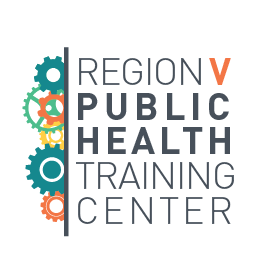By Janine O’Donnell, MPH, Kent County Health Department
Academic Health Departments (AHDs) establish formal relationships between public health practice organizations and academic institutions. The benefit of these relationships is two-fold: (1) students are better prepared to enter the workforce with a foundation in hands-on public health practice and (2) public health organizations gain increased capacity to meet community needs and perform core public health functions. The Kent County Health Department (KCHD) in Grand Rapids, Michigan has been an established AHD since 2015. Prior to the onset of the COVID-19 pandemic, KCHD hosted approximately 27 interns per year. There has been a notable drop in placements post-pandemic to 17 interns each year, begging the question: Where have all the interns gone?
In the first year of the pandemic, the drop in engagement the KCHD AHD experienced was less Internships had previously been offered exclusively on-site with no opportunity for virtual or remote work. Some internships continued to be best suited for in-person learning, while it was possible for others to transition to remote work. The forced expansion into virtual learning was ultimately a net positive as it could help interns “obtain work experience with employers of their choice despite their location, potential disabilities that may place limits on their mobility and other (family or employment) obligations,” according to Eric Feldman from the Florida International University.
The more confusing observation came after virtual internships became better established. Instead of seeing a surge in interest for public health internships—a reasonable expectation given the 40% increase in students applying for public health programs between March 2020 and March 2021—the KCHD AHD saw dwindling numbers of applicants. KCHD was not alone in this experience and studies subsequently sought to understand potential causes. As mentioned in an article by the National Association of Colleges and Employers, aOne study conducted by the Division of Continuing Studies at UW-Madison found “most of the students we spoke with were struggling in some fashion, whether it was finances, mental health, physical health, or other… There were added negative elements with online internships… such as insufficient internet access, old equipment, communication problems with supervisors and more.” Other key findings of the study noted that virtual interns were more likely to be continuing-generation, have a higher grade point average (GPA), and come from upper-income families as compared to in-person interns. Where virtual internships may provide additional opportunities to some students, this study suggests they are not equitably accessible to all students.
Whether it’s a product of limited staff capacity or barriers faced by potential interns, the problem remains the same: fewer students are gaining hands-on experiential learning in the field of public health. Further investigation is needed to fully understand the problem. Resulting solutions should account for disparate access to internships—both in-person and virtual—among different student populations.
To learn more, check out these resources:
- The Region V Public Health Training Center Student Stipend
- Strengthening The Future Public Health Workforce Through Meaningful Student Engagement blog post

